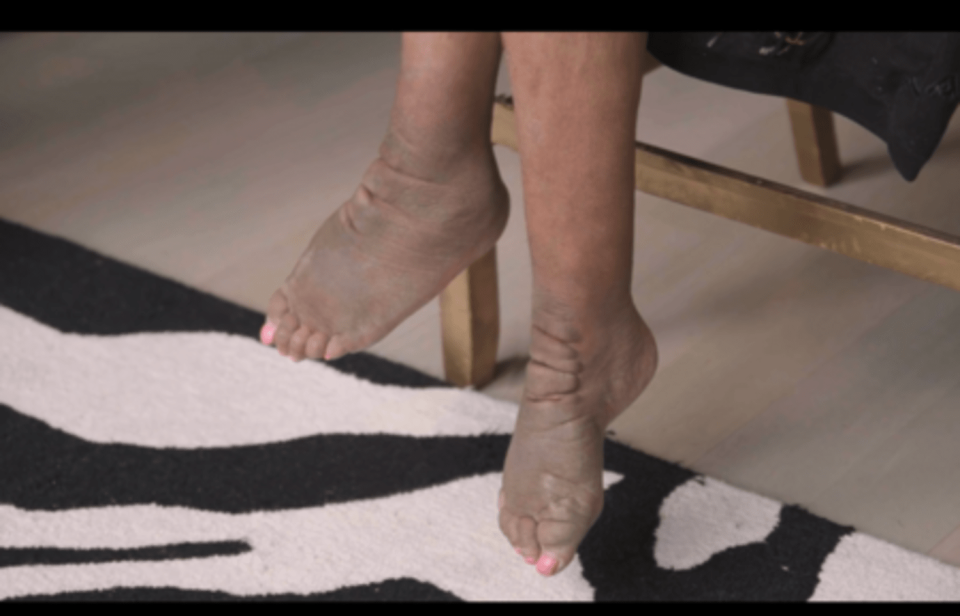What is Wendy Williams' feet disorder? What to know about lymphedema
- Oops!Something went wrong.Please try again later.
There are several times during the new Wendy Williams documentary when the former "The Wendy Williams Show" host shows her bare feet, affected by lymphedema.
From her famed purple hosting chair, moved to the living room in her New York City apartment, Williams addresses the cameras for “Where Is Wendy Williams?” a two-night event that aired on Lifetime Feb. 24 and Feb. 25, 2024. She begins first by discussing her career and the state of her financial guardianship, but the conversation quickly turns to Williams' health before the camera pans down to her feet, which are both swollen.
“This is lymphedema,” Williams says in the documentary. “And I can only feel now 2% (of my feet). Do you see what this looks like?”
Williams revealed in 2019 on her talk show that she'd been diagnosed with the condition. In a TMZ Live interview three years later, the star held up her feet to the camera.
There’s been much speculation about Williams’ wellbeing since her show wrapped its 13th season two years ago. The star has discussed her Graves’ disease, she’s been open about her history with substance use, and on Feb. 22, 2024, Williams’ team confirmed she was diagnosed with primary progressive aphasia, a type of frontotemporal dementia.
Throughout the documentary, Williams’ health is front and center, and her struggle with lymphedema is among the ailments the star addresses early on.

What is lymphedema?
Lymphedema occurs when lymph fluid builds up in various parts of the body due to a problem with the lymphatic system, which normally drains the fluid. Symptoms range from swelling, a heavy feeling in affected limbs, reduced range of motion, recurring infections and a hardening of the skin called fibrosis, per the Mayo Clinic.
There are two main types of lymphedema, Erin Pinto, a nurse practitioner with the Jill and Mark Fishman Center for Lymphatic Disorders at Children’s Hospital of Philadelphia, previously told TODAY.com. Primary lymphedema starts at birth and is due to a genetic mutation, whereas secondary or acquired lymphedema develops over a person’s life, often due to cancer or surgery.
Williams hasn’t specified what kind of lymphedema she has.
For some patients, lymphedema may be easy to ignore at first because the swelling may go away at night, but over time, it usually becomes more severe, Dr. Wei Chen, a professor of plastic surgery at the Cleveland Clinic specializing in lymphedema microsurgery, previously told TODAY.com. As fluid continues to collect, it can lead to tissue fibrosis, when the skin thickens and decreases a person’s range of motion.
Lymphedema can cause discomfort and make it difficult for people to participate in daily tasks. The condition also increases the risk of bacterial skin infections.
It’s not just “benign swelling” Chen added. “Lymphedema patients are considered regionally immunocompromised.”
What Wendy Williams has said about lymphedema in her feet
The documentary shows the pain that lymphedema can cause when it affects the feet and legs. At one point, someone has to support Williams while she stands up at a photoshoot. In between takes, she calls out for a chair and says, “I can’t do this. I have to sit down again.”
Physical therapy is a common treatment for lymphedema. During the documentary, she works with a physical trainer who tries to help her improve her stability. But Williams refuses to do the exercises he recommends due to a fear that she'll "fall down," noting that she can only feel 6% of each of her feet.
When she first shared her lymphedema diagnosis in 2019, she said that she was using a machine to help her symptoms.
“Lymphedema, by the way, I’ve been diagnosed,” she said at the time. “It’s not going to kill me, but I do have a machine — and how dare you talk about the swelling of it all.”
“If (the swelling in) my feet and lower things never go all the way down, at least I have this machine,” she added. “I sit for 45 minutes a day. And believe me, it’s the best party entertainer ever. Everybody who comes over wants to do this.”
Speaking with TMZ in 2022, she said, “Normally I would be in a wheelchair,” which she reiterates in the documentary.
How to treat lymphedema
There is no cure for lymphedema, but there are some options to make patients more comfortable and reduce the risk of complications, such as compression bandages tightly wrapped around the swollen limb, manual lymphatic drainage and pain medication.
Some lymphedema patients qualify for surgery, but not everyone is a candidate. Compression devices can also help drain lymph fluid by applying on-and-off pressure to affected areas.
Getting plenty of exercise can also help encourage lymphatic drainage.
Many lymphedema patients also have to be treated for infections that start in the skin, which can be life-threatening. The treatment is usually antibiotics, often adminisitered intravenously in a hospital.
Even with relief, lymphedema is a chronic condition that Williams may always have to deal with. As she says tearfully in the documentary, “there’s no cure for this. There’s no pill for this.”
This article was originally published on TODAY.com
